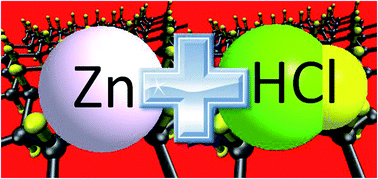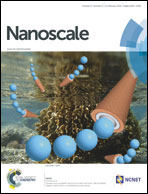Highly hydrogenated graphene via active hydrogen reduction of graphene oxide in the aqueous phase at room temperature†
Abstract
Hydrogenated graphene and graphane are in the forefront of graphene research. Hydrogenated graphene is expected to exhibit ferromagnetism, tunable band gap, fluorescence, and high thermal and low electrical conductivity. Currently available techniques for fabrication of highly hydrogenated graphene use either a liquid ammonia (−33 °C) reduction pathway using alkali metals or plasma low pressure or ultra high pressure hydrogenation. These methods are either technically challenging or pose inherent risks. Here we wish to demonstrate that highly hydrogenated graphene can be prepared at room temperature in the aqueous phase by reduction of graphene oxide by nascent hydrogen generated by dissolution of metal in acid. Nascent hydrogen is known to be a strong reducing agent. We studied the influence of metal involved in nascent hydrogen generation and characterized the samples in detail. The resulting reduced graphenes and hydrogenated graphenes were characterized in detail. The resulting hydrogenated graphene had the chemical formula C1.16H1O0.66. Such simple hydrogenation of graphene is of high importance for large scale safe synthesis of hydrogenated graphene.


 Please wait while we load your content...
Please wait while we load your content...